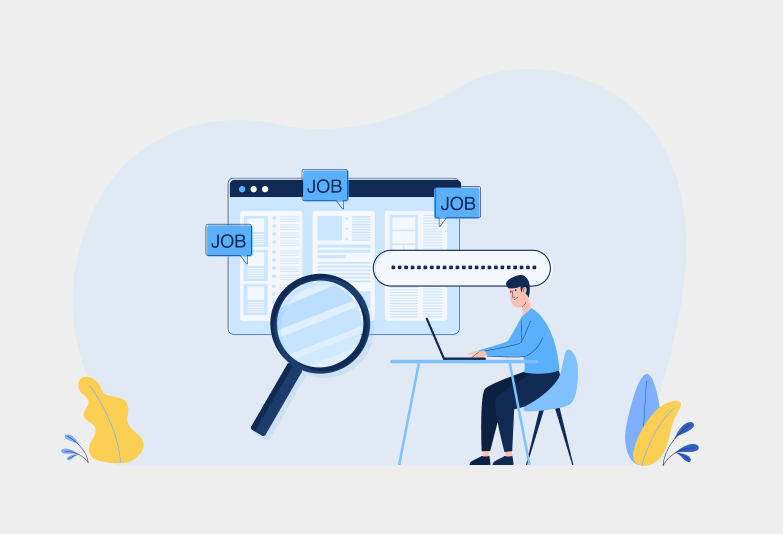Many employers tend to hire candidates on a need basis. However, this may not be an ideal approach, as you may lose highly skilled candidates. Hiring candidates without a strategic hiring plan is like building a house without having a clear roadmap. Yes, you heard it right! This plan includes optimizing processes from identifying the right hiring channels to potential candidates.
Additionally, according to research, around 75% of employers hire the wrong candidate. This is why you must build a robust hiring plan. Let’s explore how you can develop robust hiring strategies in a competitive marketplace.
What is Strategic Hiring?
A strategic hiring plan is a detailed roadmap outlining your organization’s hiring requirements over time. It includes predicting a company’s future talent needs and identifying inefficiencies in the current recruitment process. The plan should also account for changes in your business strategy and skill gaps in your team. Additionally, a hiring strategy plan includes long-term policies and templates.
Why Do You Need a Strategic Hiring Plan?
Developing a hiring strategy plan is essential for businesses building a high-performing team. This plan offers a detailed roadmap to identify, attract, and select qualified candidates. It will help you find employees who align with your company’s goals, values and long-term vision. For your better understanding, let’s dive deeper into the key benefits of building a strategic hiring plan.
1. Aligns Talent with Business Goals
A hiring plan helps align talent acquisition with business goals. Ultimately, it leads to optimal organizational performance and business success. You can attract candidates by associating recruitment efforts with the company’s long-term vision.
2. Enhances Recruitment Efficiency
Optimizing the hiring process with a detailed roadmap fosters efficiency and accelerates placement. This approach allows organizations to define hiring criteria and predict future talent requirements. This helps create structured recruitment procedures to cut wasted resources and reduce time-to-hire.
Businesses can enhance hiring quality by prioritizing specific skills and cultural alignment. They can also reduce turnover rates, attracting a productive and engaged workforce.
3. Reduces Turnover and Retention Costs
Developing a streamlined hiring plan can significantly reduce retention and employee turnover costs. Yes, you heard it right! This approach improves hiring quality, enabling organizations to foster a stable workforce. Employees will likely stay when their skills and values align with the organization.
A clear recruiting process reduces the risk of bad hires. According to Harvard Business Review, ineffective hiring decisions can cost 300% of the employee’s first-year salary. Focusing on data-driven parameters rather than guesswork will help you find the right match.
How to Create a Hiring Plan?
A well-structured hiring strategy plan serves as a detailed roadmap. It outlines steps to attract, analyze, and onboard new talent. This plan ensures that you address current and future growth opportunities. Look closely at the crucial factors to create a robust hiring blueprint.
1. Understand Your Business Objectives
Before creating a hiring roadmap, you must understand your business goals. Identify goals you wish to achieve, such as market expansion or growth targets. By identifying these goals, you can determine the specific skills, qualifications, and experience level required within your team.
2. Conduct Workforce Analysis
Next, consider evaluating your existing workforce to identify future talent needs accurately. Moreover, check your business objectives and project demands to determine specific requirements. Also, identify market trends and talent in your team and develop a recruitment plan.
3. Define Roles and Responsibilities
Based on your findings, define clear roles and responsibilities for each position. Identify the skills and qualifications needed for each role. However, these factors must align with your business goals. Furthermore, outline daily tasks and performance expectations to attract the right candidates. Then, publish clear job descriptions to simplify evaluating applicants against set criteria.
4. Develop a Robust Recruitment Strategy
To create a strategic hiring plan, assess your business’s needs. Identify the skills required for each role to attract the right candidates. Next, standardize the candidate screening process for a streamlined recruitment process. This includes resume reviews, phone screenings, and structured in-person interviews. This will help shortlist the candidate’s qualifications and find the right match.
Additionally, include a customized interview strategy that meets each position’s needs. Focus on leveraging behavioural and situational questions to understand candidates’ problem-solving capabilities. Lastly, get feedback from candidates to improve their experience.
5. Set Specific Hiring Timeline
Define a hiring timeline with milestones, such as the job posting date, candidate review, and interview schedules. Review and adjust timelines to match business needs or changes in candidate availability.
Conclusion
Discovering the right candidate can be a time-consuming and complex procedure. But creating a strategic hiring plan can make your recruitment process efficient and streamlined. This approach will help attract candidates who meet your business vision and goals. This means there is less of a probability of enhanced turnaround time.
If you struggle to make accurate hiring decisions, incorporate Jobsoid’s data-driven insightful feature to streamline your hiring plan.

 Dhara Prajapati
Dhara Prajapati 

